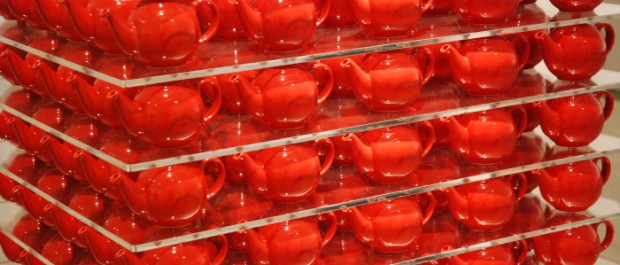I visited a retrospective of Terrence Conran’s work at the Design Museum. Judging by the title of the exhibition – ‘the way we live now’, he must have made a important impact on our lives…
At 80, Conran’s his life has been enviably full and rich. His career spans postwar austerity, the Festival of Britain, pop culture of the 60’s, the design boom of the 80’s and into the present day. At heart, Conran is an Arts and Crafts designer with life-long beliefs in the value of making things – one genuinely believes that he would not sell any furniture he could not make himself. However, despite many attempts to instill this ideal into the nation’s culture and or more profoundly its economic fabric, his vision of designing and making things never took hold.
The turning point in his life came from traveling in France, where he was inspired by beautiful, colourful and simple housewares. He took the virtues of, ‘plain, simple and useful’ and translated them into the values of his influential, ‘habitat’ stores – where he introduced innovative ‘flat-pack’ furniture, pioneered open-plan living; and popularized bean bags, woks, paper lanterns and sofa beds. Conran apparently thinks his greatest impact is on our sex-lives, a result of Habitat’s promotion of the very continental duvet. Habitat provided an experience where one could acquire the products of a contemporary lifestyle at affordable prices. Ikea clearly thought he had a good business model – they emulated it and eventually took over habitat’s market share. The brand is now clearly struggling to survive and now owned by a restructuring group.
This last fact is odd, because as the exhibition explained, Conran also believes that a designer has to be good at business – and vice versa. Although habitat made him a fortune – his business acumen could not save his diverse retail empire. Outside retail, his business skills have been successfully applied to many other areas, including design and architecture – and of course restaurants.
The exhibition had an entire section devoted to Conran restuarants. However, I found it surprisingly ordinary, which unfortunately, also seems to be reflected in the actual dining experience. From the worthy values inspired by his original ‘Soup Kitchen’ concept, Conran restaurants seem to have evolved into establishments of exclusivity and detachment. However, I understand his latest ventures are much more accessible – both in style and cuisine.
Despite Conran’s lasting legacy for his work in promoting design through the Design Museum and other design foundations, many commentators debate whether he had achieved greatness as a designer. I am not sure this exhibition displayed any particular designs that could be called great – but surely his influence is significant – by making modern design and lifestyle experiences available to all- it would be churlish to say that Conran did not make a great contribution to the way we live our lives now.



